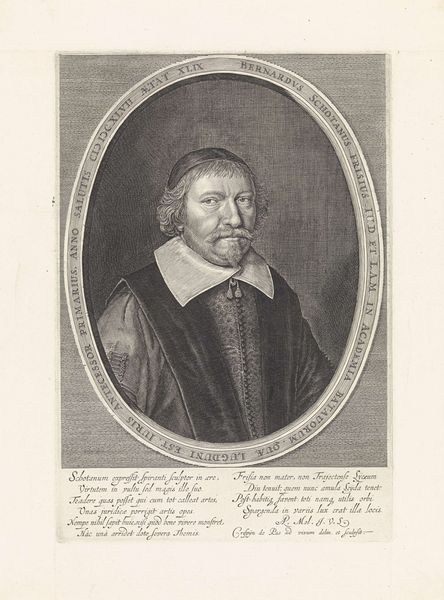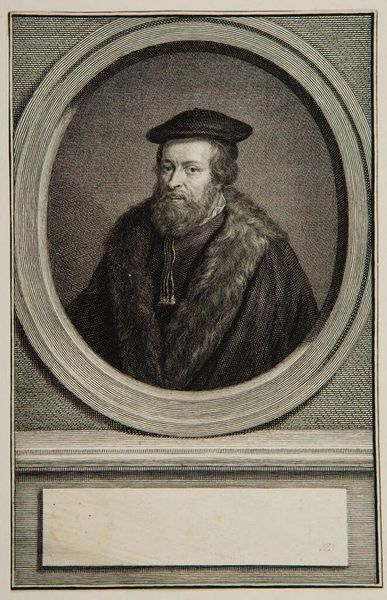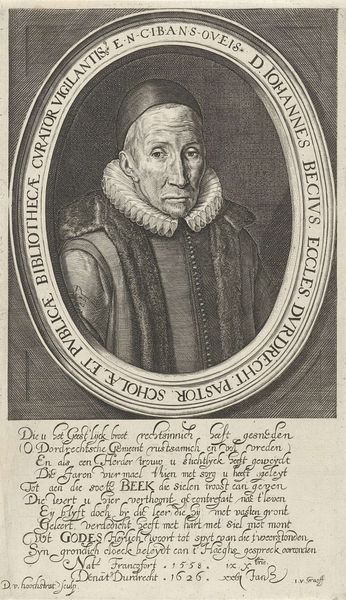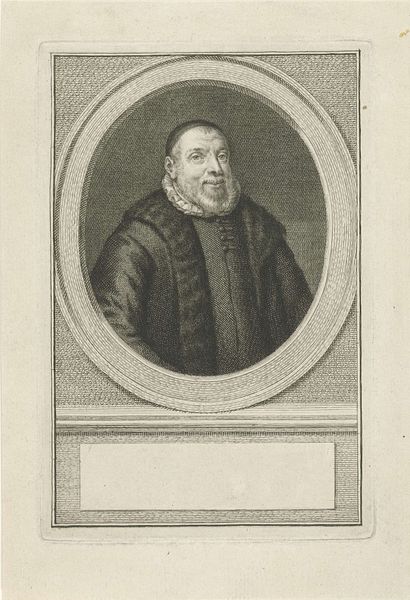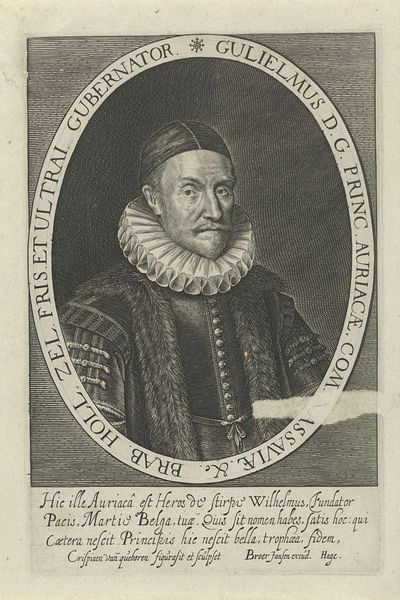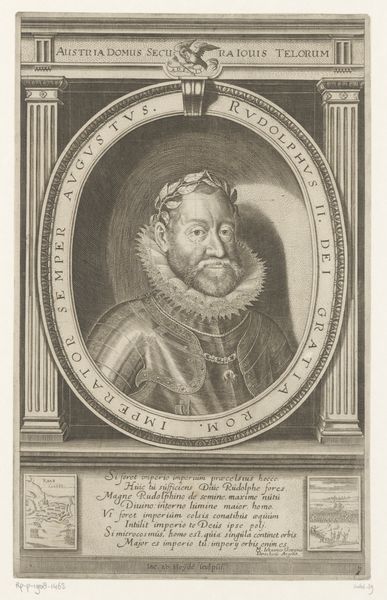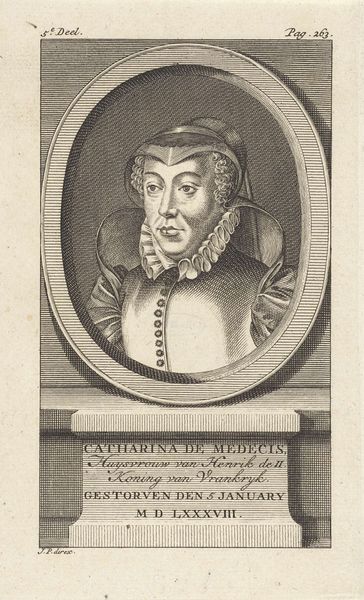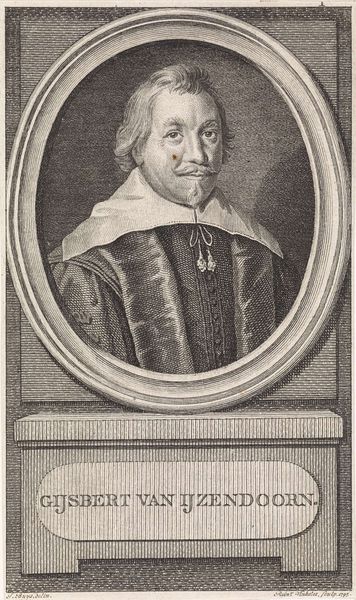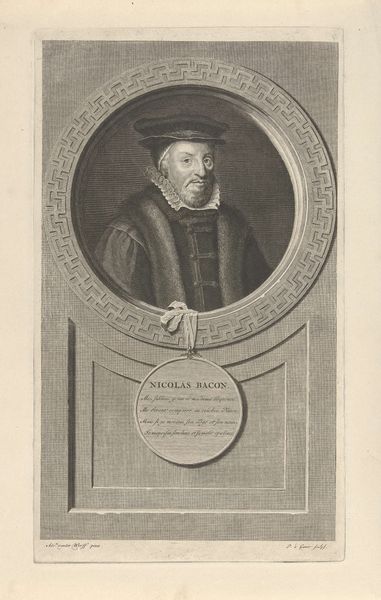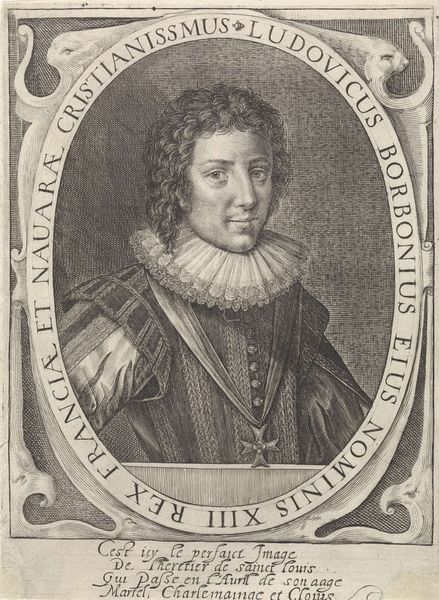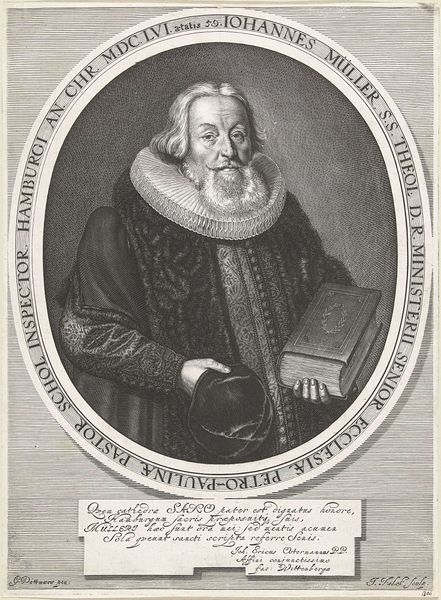
Dimensions: height 181 mm, width 121 mm
Copyright: Rijks Museum: Open Domain
Editor: We’re looking at "Portret van Adriaan Pauw," an engraving by Jacob Houbraken, likely made between 1749 and 1796. It’s currently held at the Rijksmuseum. It feels very official, very... bureaucratic. What stands out to you about it? Curator: The engraving presents an interesting intersection of power, representation, and public image in the 18th century. Houbraken's choice of engraving as a medium, quite popular at the time, speaks to the desire for wider circulation and dissemination of the image. This wasn't just a portrait for private viewing; it was meant to solidify Pauw’s position in the public consciousness. The framing, almost architectural, reinforces this sense of established authority, wouldn't you agree? Editor: I see what you mean, yes! It does feel almost like a monument to him, and a statement about the city government he was a part of. I wonder how much input he had on his representation? Curator: Exactly! How much of this image is Houbraken’s interpretation, and how much was dictated by Pauw and the societal expectations surrounding figures of authority? The choice of dress, the setting, even his expression – they all play into constructing a specific narrative. Portraits such as this became a crucial tool for the Dutch elite. And to what extent were these portraits performative, reflecting a manufactured ideal rather than lived reality? Editor: So, beyond just being a likeness, it was actively shaping how people viewed him and the institutions he represented? Curator: Precisely. Consider the museum it is housed in today; doesn't its presence there re-contextualize it further, solidifying the legacy, perhaps even mythologizing him? It's more than just an image; it's an artifact of social and political power. Editor: I hadn’t thought about how its location also changes how we view it. This has given me so much to think about when considering portraits and their role in society.
Comments
No comments
Be the first to comment and join the conversation on the ultimate creative platform.
